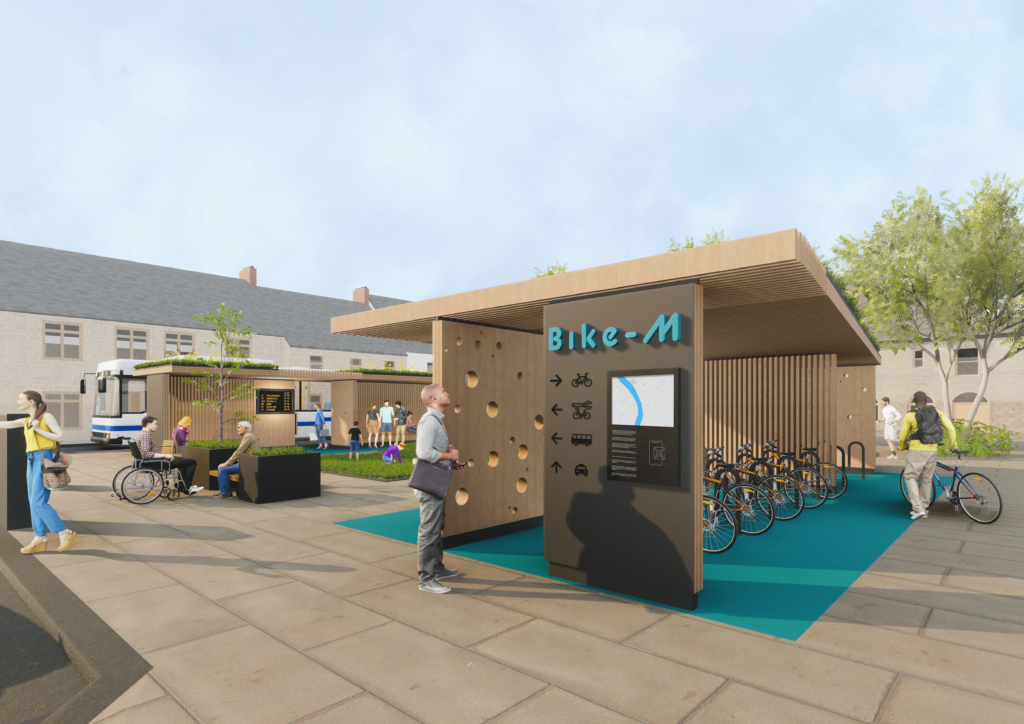Mobility hubs are key to encouraging sustainable travel, charity says
Transport charity Collaborative Mobility UK (CoMoUK) is encouraging more cities to implement mobility hubs to promote active travel and reallocate space away from private cars.
The organisation has released new guidance on how mobility hubs can be planned and implemented across Scotland, drawing up possible designs and costings for delivery.
CoMoUK says the hubs are important as they can bring together shared, public and active travel modes and create space for community facilites, as many towns and cities strive for carbon neutrality.
They can take several different forms, from large interchanges to mini stations in rural areas, and are already in place in many parts of Europe, North America and the UK.

A large, city centre mobility hub based on Glasgow’s Trongate
Mark Dowey, Senior Development Officer in Built Environment at CoMoUK, said: ‘Mobility hubs increase transport links, improve public health, bring economic benefits to the local community and save people money.
‘They can help to reduce congestion and allow for the revitalisation of cities and towns by reclaiming space from the private care.
‘Technological advances, commitments to tackle the climate crisis and travel behavioural changes caused by the Covid pandemic mean the current policy landscape in Scotland is rich to deliver mobility hubs.
‘This new document seeks to show how they could be implemented in real-life scenarios while answering questions on what they might look like, how much they cost, what is in them and why people should use shared transport.’
Designs were based on real places, with plausible settings chosen and feasibility studies carried out for each.
A city centre hub inspired by Glasgow’s Trongate was costed at £631,277, with a bus interchange, electric vehicle (EV) car club, waiting area and bike share scheme.
Elsewhere, designed with the city’s Sauciehall Street in mind, a transport corridor was costed at £499,699, showing how a hub could work on a thoroughfare.

CoMoUK’s design of a smaller surburban mobilty hub
The team have also developed a business park or housing development hub by Stirling’s Castle Business Park, a suburban mini hub based on Milngavie train station and a market town or tourism hub designed for Stonehaven train station.
All the examples are designed be part of a network to provide solutions to ‘first and last mile’ connectivity, helping to reduce car usage in urban areas.
They also act as an exemplar design standard for built environment professionals and organisations, wishing to learn more about what the infrastructure could look like.
CoMoUK has also developed a cohesive set of standards to assess mobility hub quality based on six factors:
- Visibility and accessibility – hubs must be identifiable as part of the transport network and accessible to all
- Choice of sustainable modes – including public and shared modes, with consideration of pedestrians
- Ease of switching between modes – this link should apply in both physical and digital terms
- Ensuring traveller safety is a key priority
- The design should include non-transport practical facilities
- Visual, social and community appeal to enhance the local area















